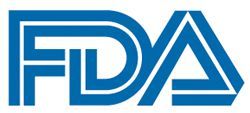FDA Approval Sought for Denileukin Diftitox for Persistent or Recurrent Cutaneous T-cell Lymphoma
A biologics license application seeking the approval of a reformulation of denileukin diftitox for use as a potential therapeutic option in patients with persistent or recurrent cutaneous T-cell lymphoma has been submitted to the FDA.

A biologics license application (BLA) seeking the approval of a reformulation of denileukin diftitox (I/ONTAK; E7777) for use as a potential therapeutic option in patients with persistent or recurrent cutaneous T-cell lymphoma (CTCL) has been submitted to the FDA.1
The submission is supported by findings from the multicenter, open-label, single-arm phase 3 Study 302 (E777-G000-302; NCT01871727), which showed that the product elicited an objective response rate (ORR) of 36.2% (95% CI, 25.0%-48.7%) by independent review committee assessment in the 69 patients who comprised the primary efficacy analysis set.2 In this group, the median duration of response (DOR) was 6.5 months (range, 3.0+ to 23.5+), with a median time to response (TTR) of 1.41 months. The clinical benefit rate (CBR) was 49.3% (95% CI, 37.0%-61.6%).
Per investigator assessment, the ORR achieved with the agent was 42.3% (95% CI, 30.6%-54.6%) in the 71 patients who comprised the efficacy analysis set. In this group, the median DOR was 5.7 months (range, 0.7+ to 26.1+), the median TTR was 1.41 months, and the CBR was 53.5% (95% CI, 41.3%-65.5%).
“The treatment of advanced CTCL remains a complex and challenging unmet medical need…Citius is proud to advance the only potential CTCL therapeutic with a mechanism of action that delivers a cytotoxic protein by binding to the IL-2 receptors found in malignant T cells and immunosuppressive T cells,” Leonard Mazur, chairman and chief executive officer of Citius Pharmaceuticals, Inc., stated in a press release. “We look forward to continuing to engage with the FDA as they review our BLA and bringing this treatment option to patients, if approved.”
The recombinant fusion protein combines the interleukin-2 (IL-2) receptor binding domain with diphtheria toxin fragments. Specifically, the agent binds to IL-2 receptors on the surface of the cell, which prompts those toxin fragments that have entered the cells to hinder protein synthesis.
I/ONTAK is a reformulation of Ontak, which was granted a full approval from the FDA in October 2008 for use in this patient population.3 Although the product was marketed from 1999 to 2014 in the United States, it was ultimately voluntarily withdrawn. Improvements made in the manufacturing process have resulted in a purified version of denileukin diftitox, which possesses the same amino acid sequence but exhibits better purity and bioactivity.
Study 302 enrolled patients who were at least 18 years of age who had a histopathologic diagnosis of CTCL and CD25 positivity.4 Patients must have received prior treatment for their disease and had a minimum washout period of 4 weeks following prior treatment before they received the first dose of study drug. To be eligible, patients were required to have an ECOG performance status of 0 to 2 for the lead-in portion of the research and 0 or 1 in the main study; they also needed to have acceptable bone marrow and a life expectancy of at least 3 months. All patients had Mycosis Fungoides or Sézary syndrome.
The trial was comprised of 2 parts. In the lead-in portion of the research, investigators sought to identify the optimal dose of I/ONTAK in 21 patients. To do this, patients were administered the product at daily doses ranging from 6 µg/kg to 15 µg/kg. In August 2015, the final data collection for this portion of the study was completed, and a dose of 9 µg/kg daily was determined to be used for the main study by the trial’s Protocol Steering Committee.
For the main study, a total of 91 patients with stage I to IV CTCL were given I/ONTAK at a daily dose of 9 µg/kg via intravenous infusion over the course of 1 hour for 5 consecutive days per 21-day treatment cycle.
The primary objective for Study 203 was ORR based on the global response score. In accordance with the trial protocol, if the lower limit of the 2-sided 95% confidence interval of the observed ORR exceeded 25.0% per IRC assessment, the study drug would be determined to be efficacious and to have clinical benefit in this population.
Secondary and exploratory end points comprised progression-free survival, DOR, TTR, ORR, and safety.
Regarding safety, the overall incidence of toxicities proved to be consistent with what has previously been reported with the original version of denileukin diftitox. The adverse effects that were most frequently experienced with the drug were nausea, fatigue, increased alanine aminotransferase, chills, and peripheral edema. Notably, no new safety signals were observed.
In 2021, the new formulation of denileukin diftitox was approved for the treatment of patients with CTCL and peripheral T-cell lymphoma (PTCL) in Japan. Subsequently, in 2011, the FDA granted an orphan drug designation to I/ONTAK for use in those with PTCL. In 2013, the regulatory agency granted another orphan drug designation to the product for the treatment of patients with CTCL.
References
- Citius Pharmaceuticals, Inc. submits biologics license application to the US Food and Drug Administration for denileukin diftitox for the treatment of patients with persistent or recurrent cutaneous T-cell lymphoma. News release. September 28, 2022. Accessed October 4, 2022. https://bit.ly/3SNfZk0
- Citius Pharmaceuticals reports topline data from the pivotal phase 3 study of cancer immunotherapy I/ONTAK (E7777) for the treatment of persistent or recurrent cutaneous T-cell lymphoma (CTCL) in support of BLA submission. News release. Citius Pharmaceuticals, Inc. April 6, 2022. Accessed October 4, 2022. https://prn.to/3SNgnis
- FDA grants full approval to Ontak (denileukin diftitox) for use in patients with cutaneous T-cell lymphoma (CTCL). News release. Eisai Corporation of North America. October 16, 2008. Accessed October 4, 2022. https://bit.ly/3C8TSgR
- A trial of E7777 in persistent and recurrent cutaneous T-cell lymphoma. ClinicalTrials.gov. Updated January 25, 2022. Accessed October 4, 2022. https://clinicaltrials.gov/ct2/show/NCT01871727



